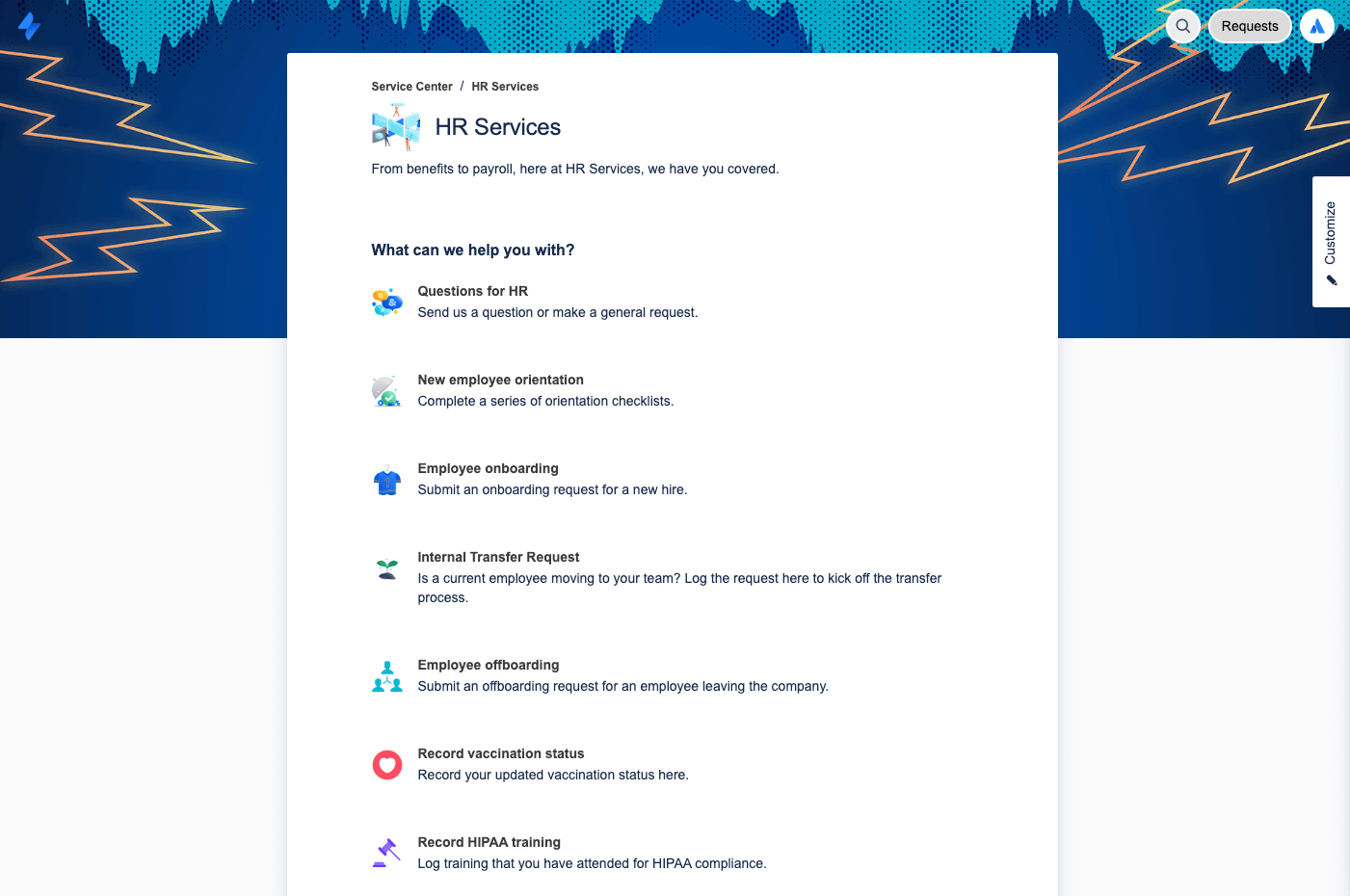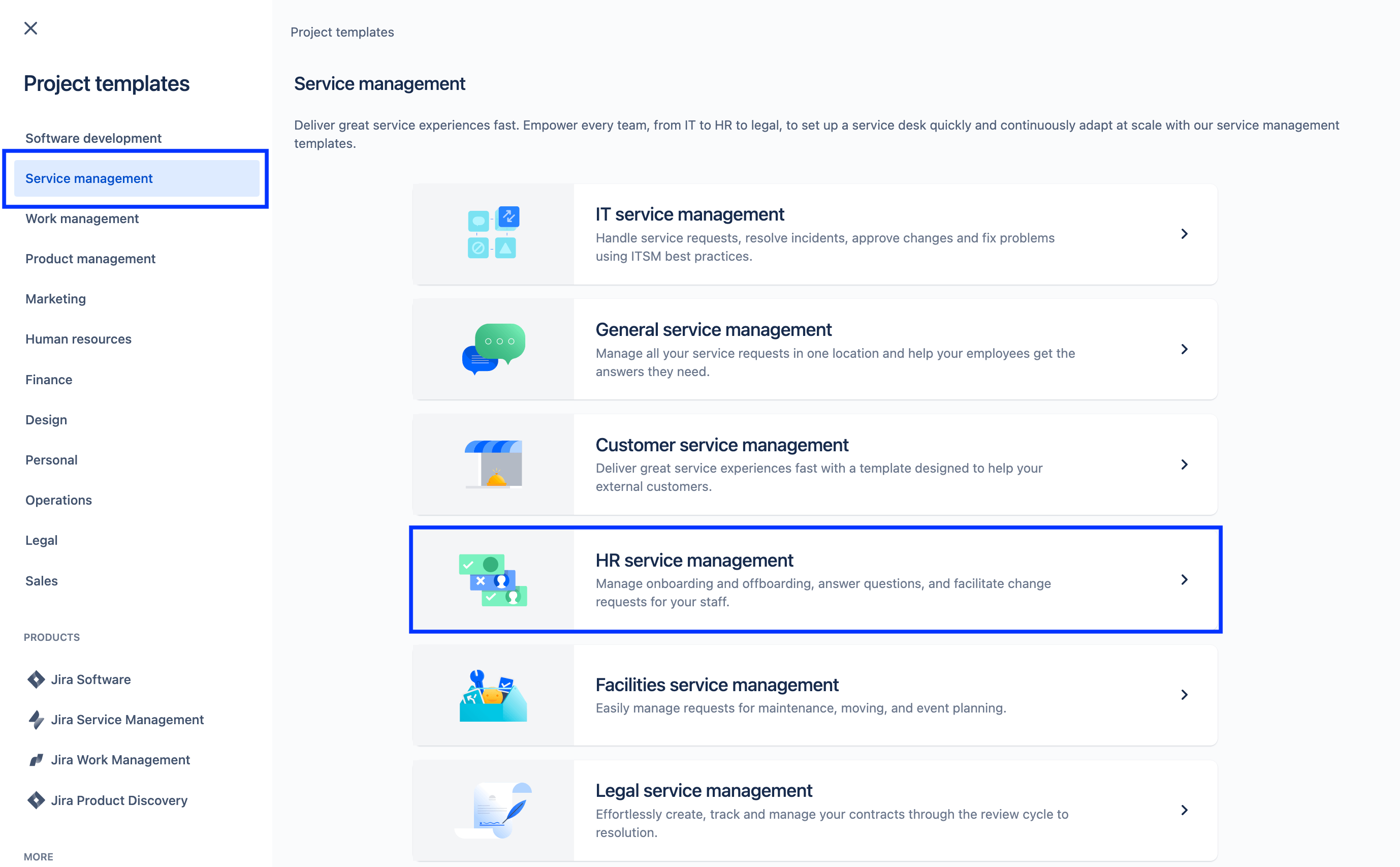ITSM to ESM: how business teams can learn from IT teams
Learn how enterprise service management (ESM) extends ITSM principles beyond IT — helping HR, finance, and other teams deliver faster, more efficient, and connected services across your organisation.
Summary
- Enterprise service management (ESM) is the application of IT service management (ITSM) principles and practices to the whole of the organisation.
- The need for ESM has arisen because of inconsistent and fragmented service delivery by non-IT teams, such as HR and finance.
- Business teams are seeking the same levels of efficiency, speed, and visibility that IT teams already have.
- ESM software is ITSM software re-purposed to help business teams adopt ITSM practices such as request management and knowledge management.
- The real power of ESM is not just in making individual teams like HR and marketing more efficient, but in facilitating digital transformation across the entire enterprise.
- Jira Service Management is an example of an ITSM turned ESM tool that aims to get all service teams collaborating more effectively.
How can ITSM help non-IT teams?
One of our 7 warning signs that your organisation needs IT service management (ITSM) is that non-IT teams are struggling with service requests.
You’re thinking, Eh? How can ITSM help a team that isn’t IT? Here’s where enterprise service management (ESM) comes in.
In this article, we’ll talk about how ITSM capabilities can be extended to business teams such as human resources (HR), finance, and legal in the form of ESM. And how popular ITSM tools like Jira Service Management have evolved to become ESM platforms.
In this article, we’ll talk about how ITSM capabilities can be extended to business teams such as human resources (HR), finance, and legal in the form of ESM. And how popular ITSM tools like Jira Service Management have evolved to become ESM platforms.
ITSM vs ESM
Before we jump into how ESM extends the value of ITSM, it’s worth clarifying what each term means.
IT service management (ITSM) is the practice of managing and delivering IT services in a reliable and efficient way. It includes core processes such as incident, change, knowledge, and request management.
Enterprise service management (ESM) is the extension of those same practices to other departments delivering service, like HR and finance.
Let’s see how ESM applies the core processes of ITSM to the HR department.
- Request management for HR streamlines the process of dealing with service requests from employees, e.g. an onboarding or holiday request.
- Incident management for HR facilitates the reporting and resolving of workplace incidents such as a grievance, accident, or safety concern.
- Change management for HR is the consistent and efficient handling of updates to employee information, job roles, or organisational policies.
- Knowledge management for HR enables easy self-service access to information about policies, systems, admin processes, benefits, and employee wellbeing.
Similarities between ITSM and ESM
Since ESM is an extension of ITSM, there are fundamental similarities between the two approaches.
- Both use standardised processes such as request, incident, and change management.
- Both aim to improve service experiences for end-users, either internal employees or external customers.
- Both emphasise self-service as a key component for improving customer satisfaction and reducing costs.
- Both aim to streamline and automate routine service tasks.
- Both use reporting to monitor performance and drive continuous improvement.
- Both leverage modern service management platforms, e.g. Jira Service Management, to manage requests and workflows.
Differences between ITSM and ESM
Now let’s look at how ITSM and ESM differ in scope, application, and impact.
Although there are differences, the fact that ESM is based on ITSM is why the two terms are often used interchangeably, particularly when searching for service management tools. Sometimes ESM is referred to as “beyond ITSM” or “ITSM for business teams”. However, we think this betrays the true power of ESM to bring the whole organisation together, which we’ll talk about more below.
Service delivery without ITSM or ESM
You might be thinking, wait, don’t the HR and finance departments already have robust enterprise resource planning (ERP) software for managing their work? Why do they need an ESM solution?
Yes, they do use ERP systems, but not for managing service to employees. If you need a service from one of these departments, e.g. your bank details changed for payroll, you’ll probably be sending a message to a shared email inbox, where it’s easily lost. There’s no way for the finance team to measure or manage this workload.
Without ITSM capabilities, business teams deliver service in fragmented and manual ways. Typically there are emails, spreadsheets, physical forms, possibly some very basic ticketing and self-service, and no automation.
This gets especially messy and inefficient as soon as an organisation starts to grow. HR teams are swamped with onboarding questions while the legal department is having to sift through long email chains to know what’s happening on a contract. Employees don’t really know where to go for help, requests disappear, different employees get different response times, and a high administrative overhead forces all other work to take a backseat.
The true power of ESM
The true power of an ESM solution lies not just in how it can streamline the processes of an individual business team. It’s in how it brings those teams together under one umbrella, eliminating silos and making a company’s service provision more structured and cohesive.
Let’s use employee onboarding as an example. When a new hire joins an organisation, a series of interconnected tasks have to be completed by multiple departments working together. HR handles paperwork. IT provisions hardware and software. Facilities assigns a workspace. Finance organises payroll. Legal drafts the employee’s contract.
Now let’s assume there’s no ESM system. Each team is doing their bit of the onboarding flow in isolation, using their own tools. Collaboration between teams likely happens via a flood of disparate emails going back and forth. The fact that it’s so easy to lose track of long email chains means that things get missed. IT might not get employee details from HR in time to set up accounts before the start date. Facilities could miss a workspace request, so the new hire arrives to find they have no desk or access badge.
Enterprise service management solves this problem by providing a unified system for the whole organisation. ESM software consolidates service operations across IT, HR, finance, facilities, marketing, and any other team providing service. Service teams benefit from a single workspace where work flows across departments, and end users access services from a single portal. As a result, an organisation can offer consistent and efficient service across all its verticals.

Let’s use the same employee onboarding scenario. Once HR makes an onboarding request, the ESM system should automatically trigger tasks for IT to set up user accounts, facilities to prepare the workspace, and finance to process payroll details. This streamlines the onboarding process and makes sure each department knows exactly what’s happening and what needs to be done.
This is the reason enterprise service management is called enterprise service management and not HR service management, finance service management, legal service management, etc. ESM is specifically about extending ITSM capabilities to the whole of the organisation, not just this team or that. Basically, there’s no point implementing an ESM system for just the HR team, because it won’t be ESM.
It’s also why ESM is seen as a driver of digital transformation. Digital transformation is all about using technology to break down internal silos; automating repetitive manual tasks; and centralising processes, communication, and governance. ESM software is technology that can facilitate this.
But what ESM software should you choose?
Many organisations are looking for ITSM tools that ‘also work’ for business teams. However, to make sure it fully enables cross-functional collaboration, you’re better off looking for a tool that describes itself as ESM.
Jira Service Management is a good example of a platform that started life as an ITSM tool but evolved into an ESM one. As soon as Atlassian saw that non-ITSM teams were starting to use ITSM software to provide services, they began adding features to Jira Service Management for business teams. These include project templates, automations, request types, and statuses for specific use cases, e.g. employee onboarding and budget allocation.

Atlassian realised that encouraging other departments to follow the tactics traditionally owned by IT could lead to better cross-functional collaboration and improved service delivery across the enterprise. Many Atlassian customers have now adopted Jira Service Management for HR, facilities, legal, and marketing, which earned Atlassian recognition by Forrester as the highest-ranked vendor in ESM strategy in 2023.
Whichever tool you choose, it should be easy for different departments to connect their processes, share information, and respond quickly to requests. The result is a more efficient, more agile, and more cohesive organisation capable of scaling with ease.
If you’re interested in learning more about Jira Service Management and ESM, contact us for a personalised demo.


